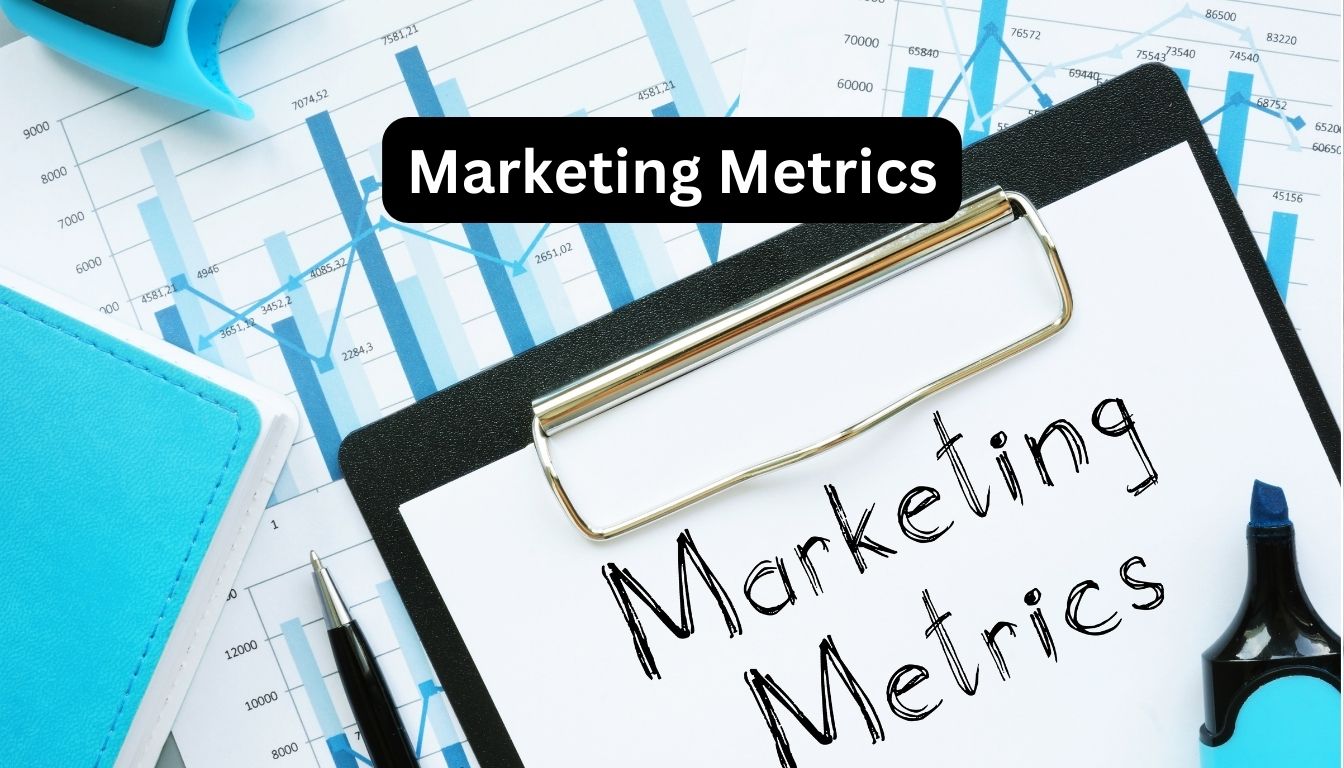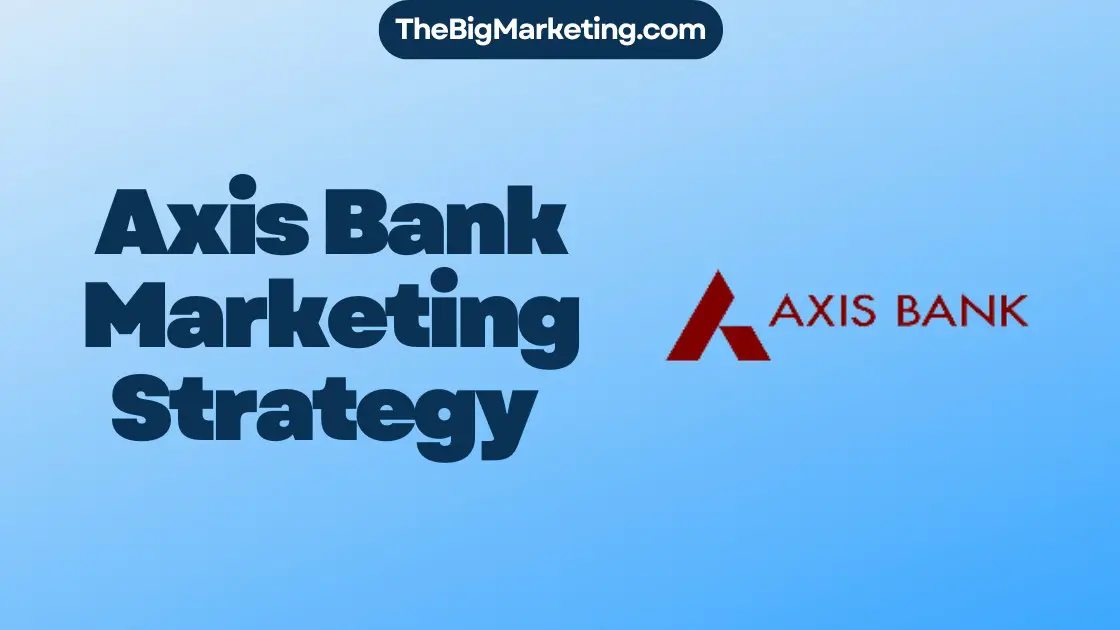Understanding customer acquisition cost (CAC) is vital for any business looking to grow sustainably. CAC measures the total cost associated with acquiring a new customer, providing insights into marketing efficiency and long-term profitability. Businesses that grasp this metric can strategically allocate resources, ensuring a healthy relationship between customer acquisition expenses and the expected returns.
Calculating CAC involves assessing both sales and marketing expenditures against the number of new customers gained over a specific period. By identifying trends in CAC, businesses can make informed decisions that enhance marketing strategies and improve the overall customer experience. This deep understanding empowers companies to optimize their efforts and maximize the value of each customer through informed spending.
In a rapidly evolving market, leveraging CAC effectively allows businesses to stay competitive and adapt to external factors influencing their costs. Mastering this metric not only helps in achieving growth goals but also fosters a data-driven approach that aligns marketing and sales efforts towards long-term success.
Key Takeaways
- CAC is essential for understanding the cost of acquiring new customers.
- Optimizing CAC can lead to improved marketing strategies and customer retention.
- A strong focus on CAC informs better financial decisions and resource allocation.
Understanding Customer Acquisition Cost (CAC)
Customer Acquisition Cost (CAC) is a critical metric for businesses that quantifies the investment required to acquire new customers. It plays a vital role in guiding marketing strategies and assessing the efficiency of sales efforts.
Definition and Importance
CAC is defined as the total costs associated with acquiring a new customer, calculated by dividing the total sales and marketing expenses by the number of new customers gained within a specific period.
Understanding CAC is important because it directly affects a company’s profitability. If the CAC is too high relative to the revenue generated from customers, it can lead to unsustainable business practices. Lowering CAC allows companies to improve marketing return on investment and enhances their ability to scale.
Components of CAC
Several components contribute to the calculation of CAC, including:
- Sales and Marketing Costs: This encompasses all expenses related to advertising, promotional activities, and salaries of the marketing team.
- Advertising Costs: This specifically looks at how much money is spent on various marketing channels, such as online ads, social media campaigns, and traditional media.
- Promotional Campaigns: Costs associated with special promotions designed to attract new customers.
To calculate an accurate CAC, businesses should consider all these components over a defined time frame. This detailed breakdown ensures better insight into where funds are being utilized and the effectiveness of each marketing channel.
Calculating CAC
Calculating Customer Acquisition Cost (CAC) is essential for businesses aiming to measure the efficiency of their marketing strategies. The process involves using specific formulas and examples to illustrate how to derive this important metric.
The CAC Formula
To calculate CAC, one must use the following formula:
CAC = (Sales + Marketing Expenses) / Customers Acquired
In this formula:
- Sales refers to the direct costs attributed to the sales efforts.
- Marketing Expenses cover all costs related to advertising and promotions.
- Customers Acquired is the total number of new customers gained within a specific period.
A business can choose different timeframes for calculation—monthly, quarterly, or annually. Consistency in the chosen timeframe aids in making accurate comparisons over time. The formula provides a clear strategy for understanding how much investment is required to gain a new customer, offering insight into marketing effectiveness.
Examples of CAC Calculations
To illustrate the concept, consider a company that spends $30,000 in sales and marketing expenses over a quarter and acquires 300 new customers. Using the CAC formula:
CAC = ($30,000) / (300) = $100
This result indicates that the company spends $100 for each new customer acquired.
Another example may involve a company with $45,000 in expenses and 600 new customers. Applying the same formula:
CAC = ($45,000) / (600) = $75
These numerical examples demonstrate how varying marketing investments and customer acquisition rates affect CAC. Utilizing tools such as a CAC calculator or Excel spreadsheet can streamline complex calculations and enhance data analysis for businesses.
Marketing Strategies and Cost
Effective marketing strategies directly influence customer acquisition cost (CAC) and overall business profitability. Understanding how to allocate marketing spend and evaluating the success of campaigns can significantly impact a company’s growth.
Allocating Marketing Spend
Successful marketing begins with precise allocation of resources. Businesses must analyze various channels to determine where to focus their budgets effectively.
Advertising: Traditional advertising remains vital, but digital platforms have gained prominence. Businesses may explore PPC (pay-per-click) advertising, which allows tracking of CAC per campaign.
Content Marketing: Developing quality content can attract leads through organic search and social media. Allocating funds for high-quality production leads to sustained engagement.
Social Media Marketing: Targeted social media campaigns can enhance brand visibility. Businesses should measure conversion rates to identify which platforms yield the highest return on investment.
Allocating marketing spend involves understanding the costs associated with each channel while focusing on those that produce the best results.
Evaluating Marketing Campaigns
Regular evaluation of marketing campaigns is essential for optimizing CAC. Companies need to track key performance indicators (KPIs) to assess effectiveness.
Campaign Performance: Analyzing data from each campaign helps understand which strategies drive conversions. This includes monitoring click-through rates and engagement metrics.
CAC per Marketing Channel: It’s crucial to break down CAC by channel. This allows firms to identify specific strengths and weaknesses in their marketing strategies.
Conversion Rate Optimization: Businesses should prioritize efforts that enhance conversion rates. Testing different approaches, such as A/B testing, can provide insights into what resonates with the target audience.
By rigorously evaluating marketing campaigns, companies can continuously adjust their strategies for better performance and lower acquisition costs.
Customer Lifetime Value (LTV) and CAC Ratio
Customer Lifetime Value (LTV) signifies the total revenue expected from a customer throughout their relationship with a business. The LTV to Customer Acquisition Cost (CAC) ratio is a crucial metric to assess profitability and growth potential. This ratio helps businesses understand if their investment in acquiring customers is justified by the revenue those customers bring over time.
Understanding LTV
Customer Lifetime Value is calculated by analyzing the average revenue generated per user and their expected retention period. The formula for LTV can be expressed as:
LTV = Average Revenue per Customer X Average Customer Lifespan
For example, if a customer generates $100 in revenue annually and stays for five years, the LTV would be $500. This figure guides businesses in forecasting revenue and making informed marketing decisions.
High LTV indicates strong customer loyalty and effective retention strategies. Businesses should focus on maximizing each customer’s lifespan to enhance LTV, making them more profitable over time.
Optimizing LTV Ratio
The LTV ratio serves as a measure of return on investment. A ratio of 3:1 is generally considered healthy, indicating that for every dollar spent on acquiring a customer, three dollars are generated in return.
To optimize this ratio, businesses need to focus on two areas:
- Reducing CAC: Improve marketing efficiency and streamline onboarding to lower acquisition costs.
- Increasing LTV: Enhance customer retention through loyalty programs, superior customer service, and personalized marketing.
Businesses can also employ analytics to identify high-value customers and tailor their strategies accordingly. A balanced focus on both elements can significantly improve profitability and ensure sustainable growth.
Application in Different Sectors
Customer acquisition costs (CAC) are influenced by various factors unique to each sector. Understanding these costs can help businesses tailor their marketing strategies. Different industries have distinct CAC benchmarks and approaches.
SaaS Business Model
In the SaaS industry, the average customer acquisition cost is around $702. This figure often reflects investment in marketing channels like content marketing and paid advertising. SaaS companies frequently adopt subscription models, which means that customer lifetime value (CLV) can justify higher CAC.
Many SaaS businesses implement product-led growth strategies. This approach uses the product itself as the primary means of acquisition. By providing free trials or demos, companies can lower upfront acquisition costs. Retention becomes essential since keeping customers can offset initial investments in acquisition efforts.
Real Estate and High-Investment Industries
In high-investment sectors like real estate, acquisition costs can significantly exceed those in other industries. Here, obtaining a new client might average around $1,450. These high costs are often due to robust marketing strategies combined with substantial cost of sales.
Real estate agents must invest in networking, high-quality listings, and personal branding to attract clients. The focus is on acquiring high-value customers who can deliver considerable profits over time. This requires careful budgeting and strategic marketing to justify the higher CAC, making it critical to measure and optimize throughout the acquisition process.
Data-Driven Decision Making
Data-driven decision making is essential for businesses aiming to optimize customer acquisition strategies. By leveraging analytics, companies can assess the effectiveness of various marketing campaigns and allocate resources more efficiently.
Analyzing Acquisition Channels
Identifying the right acquisition channels is crucial. Businesses must analyze different advertising channels to determine which yield the best results. This can include social media, email marketing, pay-per-click ads, and content marketing.
To assess channel performance, metrics such as click-through rates (CTR), conversion rates, and cost per acquisition (CPA) are essential.
For instance, a company might find that social media ads have a lower CPA than email campaigns, allowing them to allocate more budget towards social efforts. Utilizing tools like Google Analytics can provide insights into customer behavior across channels, informing future strategies.
ROI and Profitability Assessment
Calculating return on investment (ROI) for each marketing campaign is key to understanding profitability. Businesses should consider not only direct revenue generated but also the impact on customer lifetime value (CLV).
Factors such as payback period are vital. This period indicates how long it takes to recover acquisition costs. A shorter payback period typically means healthier cash flow and better profit margins.
A clear analysis of investment versus revenue helps companies understand their customer success. Tracking these metrics enables firms to refine strategies, ensuring they focus on initiatives that drive sustainable growth.
Improving Customer Acquisition
Enhancing customer acquisition involves a focus on retaining existing customers and implementing effective strategies for attracting new ones. Understanding these elements can lead to a more efficient acquisition process and increased customer satisfaction.
Retention and Customer Experience
Retention begins with providing a positive customer experience. This includes quality customer service that meets and anticipates needs. Factors such as responsiveness and personalized communication contribute significantly to customer satisfaction.
To enhance retention, businesses can implement loyalty programs that reward repeat purchases. For example, offering discounts or exclusive access for loyal customers can drive engagement.
Key strategies:
- Feedback loops: Encourage and act on customer feedback to improve services.
- Personalization: Tailor marketing materials and offerings based on customer preferences.
Effective retention lowers acquisition costs by increasing customer lifetime value. Satisfied customers also become advocates, promoting the brand through word-of-mouth marketing, leading to new customer acquisition.
Cost-Effective Acquisition Strategies
Cost-effective acquisition strategies focus on optimizing marketing spend while maximizing reach. Analyzing metrics like cost per click (CPC) ensures budget allocation aligns with performance.
Utilizing digital channels like social media and search engines aids in reaching target audiences. Campaigns must be tailored to meet the needs of prospective customers while maintaining a clear cost structure.
Effective strategies include:
- Content marketing: Providing valuable content attracts potential customers organically.
- Referral programs: Encouraging existing customers to refer new ones can reduce overall acquisition costs.
Implementing these strategies can significantly improve customer acquisition cost, leading to a stronger financial performance.
External Factors Affecting CAC
Various external factors significantly influence Customer Acquisition Cost (CAC). Understanding these factors is crucial for businesses aiming to optimize their acquisition strategies and manage costs effectively. Economic conditions and technological developments play a pivotal role in shaping CAC.
Economic Climate and Market Conditions
Economic trends directly impact consumer behavior and spending habits. During periods of economic growth, customers may be more willing to invest in products or services, reducing CAC for businesses. Conversely, in a recession, companies often face increased competition for a limited customer base, which can drive up marketing expenses.
Market dynamics also come into play. If a market is saturated, businesses may need to increase their marketing budgets to stand out. Factors such as target audience preferences and evolving buyer personas can necessitate changes in promotional strategies, impacting costs.
Additionally, data analytics tools can provide insights into economic climates by tracking changes in customer engagement and spending. This information enables businesses to adapt their strategies proactively, controlling CAC amid fluctuating economic conditions.
Technological Advancements
Technological advancements can drastically affect CAC by altering how companies reach and interact with their target audiences. Innovations in digital marketing platforms, like SEO and social media advertising, can enhance customer targeting, improving the efficiency of marketing efforts.
For example, advanced data analytics allow businesses to analyze consumer behavior with greater accuracy, helping in precise audience segmentation. This means marketing efforts can be tailored more effectively, potentially lowering CAC.
Moreover, emerging technologies, such as artificial intelligence, can automate aspects of customer engagement and lead generation. Automation reduces personnel costs and streamlines processes, further impacting acquisition costs. However, businesses must also invest in new technology, which can initially raise costs until long-term savings are realized.
Accounting for CAC
Understanding how Customer Acquisition Cost (CAC) appears in financial documents is crucial for businesses monitoring expenses. The treatment of CAC influences financial assessments, tax implications, and strategic planning.
CAC in Financial Statements
CAC primarily affects the income statement and the balance sheet. On the income statement, CAC is categorized under sales and marketing expenses. This inclusion directly impacts net income, highlighting the effectiveness of customer acquisition strategies.
In the balance sheet, CAC does not appear as a separate line item. However, the implications of CAC can be seen in retained earnings, which reflect the accumulated net income after deducting expenses, including CAC. Accurate accounting practices require tracking CAC not just as a stand-alone cost but in relation to revenues generated from acquired customers.
Tax Considerations for CAC
CAC can often be considered a deductible expense for tax purposes. Businesses can deduct eligible marketing and sales expenses related to acquiring new customers, thus reducing taxable income. Key expenses that qualify include advertising costs, salaries for marketing personnel, and other direct acquisition costs.
However, tax treatment may vary based on fiscal policies and specific regulations in different jurisdictions. It is vital for companies to maintain meticulous records of CAC-related expenditures to substantiate any claims for tax deductions. This practice ensures compliance and optimizes potential tax benefits associated with customer acquisition efforts.
Frequently Asked Questions
This section addresses common inquiries related to customer acquisition cost, including calculation methods, pertinent elements, and implications for business performance. Insights into industry variations and strategies for cost reduction are also provided.
How do you calculate customer acquisition cost?
Calculating customer acquisition cost (CAC) involves three primary steps. First, a specific time period should be chosen, such as a month or quarter. Next, total marketing and sales expenses for that period are summed, and this total is divided by the number of new customers acquired during the same time frame.
What elements should be included when determining customer acquisition cost?
When determining CAC, several elements should be included. Costs such as marketing expenses, sales team salaries, advertising, and any associated operational expenses must be considered. Each of these components contributes to the total cost of acquiring a customer.
What does customer acquisition cost indicate about a company’s performance?
Customer acquisition cost serves as a key indicator of a company’s marketing efficiency and financial health. A high CAC relative to customer lifetime value may suggest inefficiencies in marketing strategies. Conversely, a low CAC indicates effective customer acquisition strategies and can enhance profitability.
How can businesses effectively reduce their customer acquisition costs?
Businesses can reduce CAC through various strategies. Focusing on targeted marketing to reach the right audience can improve efficiency. Additionally, enhancing customer referral programs can lower costs by leveraging existing customer networks for new acquisitions.
In what ways does customer acquisition cost vary by industry?
CAC can vary significantly by industry due to differences in customer behavior, competition, and marketing strategies. For instance, industries with higher customer lifetime values, like SaaS, may tolerate a higher CAC, while retail sectors may require more cost-conscious strategies to attract customers.
How does customer acquisition cost differ from cost per acquisition?
Customer acquisition cost (CAC) and cost per acquisition (CPA) are related but different metrics. CAC encompasses all costs associated with acquiring a customer, while CPA typically focuses on specific campaigns or channels. Understanding this distinction helps marketers assess the effectiveness of their strategies more accurately.







